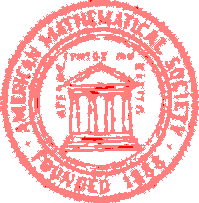Hardware and software for distributed and supercomputer systems
Research Article
The organization of interaction the active objects of homogeneous digital structures
Gennady Georgievich Stetsyura
| V. A. Trapeznikov Institute of Control Sciences of RAS, Moscow, Russia | |
 gstetsura@mail.ru gstetsura@mail.ru |
Abstract. This article extends the possibilities of interaction of active devices (objects) in homogeneous digital systems. The system consists of objects that are located within a few tens of meters and organize their interaction only by their own means. Objects can be stationary and mobile with arbitrary and time-varying mutual arrangement The homogeneity of the system means the absence of external control and equal opportunities of objects in the organization of their interaction. Communications between objects are wireless using optical or radio signals. Signals from any source object go directly to all receiver objects. The object receives the right to transmit signals deterministically according to its priority value, either dynamically or statically. The proposed structure and interaction methods allow objects to perform distributed group (associative) operations in addition to the usual distributed system message exchange. In them, objects simultaneously eliminate a group of conflicts of access to the common channel of data exchange, determine the state of all objects of the system, and synchronously perform joint actions of objects, reacting to unforeseen changing external conditions. A group of objects simultaneously participating in a group operation is selected by specifying a set of criteria that the objects must possess. The homogeneity of the system greatly simplifies its technical implementation, but the inclusion of heterogeneity in the system will accelerate the performance of group operations when becoming more complex. Therefore, the homogeneous system is proposed to be used mainly for communication between active peripheral devices and those with more complex cluster computers. (In Russian).
Keywords: computer clusters, decentralized control, fast synchronization of digital objects, intranet computing, distributed associative operations, edge computing
MSC-2020 65Y05; 68Q10
65Y05; 68Q10
For citation: Gennady G. Stetsyura. The organization of interaction the active objects of homogeneous digital structures. Program Systems: Theory and Applications, 2023, 14:4, pp. 3–23. (In Russ.). https://psta.psiras.ru/2023/4_3-23.
Full text of article (PDF): https://psta.psiras.ru/read/psta2023_4_3-23.pdf.
The article was submitted 14.06.2023; approved after reviewing 07.07.2023; accepted for publication 12.09.2023; published online 10.10.2023.


